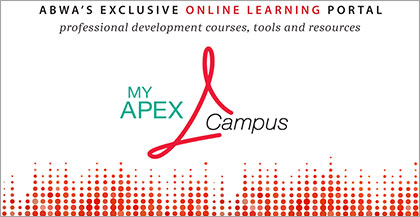
by American Business Women's Association | Jan 10, 2020 | Uncategorized
One of the biggest misconceptions about becoming your own boss is that you have to create a grand business plan in order to be successful. Luckily, that isn’t always the case. There are options to do what you love and provide services that can allow you the freedom of being self-employed. If you love to teach, bake, create, provide child care, get people organized, then you can become your own boss! All you have to do is decide on the service you can provide and make your dream a reality!
Business.org is ready to help American’s ditch the “9 to 5” and become their own boss in 2020. But which dreams are American’s most likely to pursue? It turns out that entrepreneurs who want to go solo (like an entrepreneur but doing it solo), have quite a few options they’re exploring. Using data from Google Trends, we found around 30 frequently searched solopreneur jobs. We then broke those jobs down by state to figure out where, exactly, each solopreneurial venture is most popular. Check out the full report to each state’s results.”
Here are some interesting findings about on the most popular solopreneur jobs nationwide for 2020.
- Surprising absolutely no one, California’s top-ranked solopreneur job is social media influencer
- A little more surprising? “Social media influencer” was also the most-searched term in Illinois and Texas—two lovely
states, of course, but both with a much lower reputation for stardom than La-La Land.
- Estheticians had the most-searched solopreneur job in Hawaii (spa treatments clearly go hand in hand with paradise-
seeking vacationers).
- People in Idaho and Utah seem to need a little extra encouragement; life coaching came in first in both states.
- “Amazon seller” took first place in three states thousands of miles apart: Florida, Nevada, and New Jersey. Obviously,
solopreneurs can follow Amazon’s motto (“Work Hard. Have Fun.”) no matter where in the US they live.

by Rene Street | Nov 12, 2019 | Uncategorized
Organizations have many options when it comes to marketing for Small Business Saturday, which occurs on the first Saturday after Thanksgiving. Small Business Saturday encourages consumers to support local businesses. The event drives attention to local small companies, presenting them with an opportunity to create brand awareness and increase local sales.
Taking advantage of Small Business Saturday requires planning, executing, and financing strategies. Funding your efforts can be done through securing a small business loan. The working capital can be used to hire seasonal staff, purchase extra inventory, or pay for a marketing campaign.
However, marketing isn’t always simple. Here’s what you need to know and how to take advantage of small business’s big day.
Ramp Up Digital Marketing for Small Business Saturday
Brands must work to engage customers through both digital and physical means. This omnichannel experience begins with digital marketing basics. You Should Consider:
Building Relationships on Social Media: Connecting with customers on social media can help you capture additional holiday sales. When marketing for Small Business Saturday, you may want to gradually tease out your plans for the big day. You can use social media to broadcast a special offer or invite customers to an in-store event. Social media is ideal for highlighting how you plan to celebrate Small Business Saturday. When posting on social media, be sure to include the #ShopSmall and #SmallBizSat hashtags.
Using Email Marketing: Email campaigns are an effective way to garner consumer attention and bring awareness to exclusive Small Business Saturday deals. It’s important to go beyond broad, generic messages. Personalization is increasingly vital in standing out in email campaigns. Key Strategies to Employ:
- Take the time to get to know your audience.
- Create copy aimed directly at them.
- Highlight promotions that fit their needs.
- Give them a clear action to take in response to the message.
Fostering Online Reviews: Consumers actively research products and services before committing to a purchase. Consider teaming up with an influencer who has a large following and a fair amount of influence within your area or niche. You can send them product samples in return for an honest review. This will help drive visibility and increase consumer confidence.
Implement Traditional Advertising Programs
Small businesses benefit from the ability to offer localized, personal services. You can leverage your relationship with your community to build trust and increase brand awareness. Traditional advertising campaigns can be ideal for furthering your presence in your community. Key Strategies to Employ:
Getting Involved With Your Local Community: Participating in community service events helps you get to know those around you. And helps them get to know your business. Interacting with potential customers in a community setting shows that you’re interested in relationship building rather than just maximizing sales. You could consider sponsoring a charity or local event. Successful community involvement plans require commitment and a genuine interest in what you’re doing.
Run Ad Campaigns With Local Media: If you want to drive engagement at a local level, you must use channels that are specifically aimed at your local community. Your message can slip into the background on far-reaching media channels, but an ad campaign in a local paper can go a long way in helping people connect with your brand.
Offer Deals and Promotions: It’s critical to recognize the importance of deals and promotions when marketing for Small Business Saturday. Limited time offers, and discounts can persuade customers who are on the fence about your products and services to give them a try.
Prepare Your Systems and Operations
If you’re successful at marketing for Small Business Saturday, then you’ll need to be prepared for an increase in volume and customer interactions. Consider:
Optimizing for Mobile: Consumers do everything from product research to actual purchases via smartphones and tablets. Make sure your website is mobile optimized. If your website is not optimized for mobile, you risk running into problems as you work to increase traffic surrounding Small Business Saturday.
Updating Your Website: Make sure your address and contact info is correct on your website. Additionally, review your site to make sure that promotions are prominently displayed, and your payment process is working properly. Put new product pictures out if your current listings seem dated and ensure copy properly reflects your services. Take time to upgrade and adjust your website before the big event.
Hiring Seasonal Staff: Since Small Business Saturday falls in line with the holiday season, it’s a convenient time to bring in extra staff. Seasonal employees can be used to help launch a new marketing campaign, handle sales, or interact with customers.
Managing Your Inventory: One of the most important considerations for Small Business Saturday is that you have plenty of goods to sell. A boost in sales won’t matter if you don’t have inventory available to meet customer needs. Take some time to analyze your supplies and ensure you’re ready for the increase in demand.
By participating in Small Business Saturday, local businesses receive quite a few perks including community support, great local marketing opportunities, and the high potential to reach new customers. Utilize the above marketing strategies to better prepare for Small Business Saturday and take advantage of the shopping frenzy.
 Ben Gold is president of QuickBridge, a privately-held financial services firm providing “small business loans” and short-term working capital funding solutions for small-to medium-sized businesses nationwide. Based on its growth, QuickBridge has ranked two consecutive years on the Inc. 500 Fastest Growing American Companies list. Ben is a thought leader in the financial tech. industry and a contributing member of the Forbes Finance Council.
Ben Gold is president of QuickBridge, a privately-held financial services firm providing “small business loans” and short-term working capital funding solutions for small-to medium-sized businesses nationwide. Based on its growth, QuickBridge has ranked two consecutive years on the Inc. 500 Fastest Growing American Companies list. Ben is a thought leader in the financial tech. industry and a contributing member of the Forbes Finance Council.

by American Business Women's Association | Sep 16, 2019 | Blog, news
ABOUT THE AUTHOR: Kate Zabriskie is the president of Business Training Works, Inc., a Maryland-based talent development firm. Kate and her team help businesses establish customer service strategies and train their people to live up to what’s promised.
Zombies in the workplace are soul-sucking, money-draining, productivity-killing entities that chip away at an organization’s spirit and its engagement levels one convert at a time. These creatures often look like the rest of us, but deep down they’re cancerous beasts that can potentially drive a business to ruin.So what’s a manager to do? Recognize the problem, know its source, understand why action is essential, and then do the work required to create a zombie-free workplace.
KNOWING YOUR ZOMBIES
Although zombies come in many varieties, most resemble one or more of the following:
- Negative zombies – Often the easiest to spot, they complain, moan, and express their dissatisfaction regularly. Some will use humor to disguise their disgust, but they are nevertheless contagious and a threat to the uninfected.
- Minimum-contributor zombies – They do the basics but nothing more. You will never see them looking for work or volunteering for projects. Furthermore, many act as if they are doing you a favor when you ask them to perform a task they get paid for doing.
- Status-quo zombies – These change-averse creatures dig in their heels and fight the future. They are happy with everything the way it is and take no initiative to implement new ideas. The most dangerous of this variety will even resort to sabotage if they feel threatened.
- Shortcut zombies – They find ways to cut corners and circumvent processes. Their choices frequently expose the organization to unneeded risk. Worse still, when these zombies are in charge of training others, they pass on bad habits and poor practices.
IDENTIFYING THE SOURCE
To rid an organization of zombies, you must understand how you got them. Each zombie has a creation story. These are the most common:
- The ready-made zombie story: People who were really zombies when someone interviewed them, and they got the job anyway.
- The we-did-it-here zombie story: Unlike the ready-made zombies, these zombies were created after they joined the organization. They were discouraged, taught to fear, or worse.
- The retired-on-the-job zombie story: These zombies should be long retired, but because of a need to complete a certain number of years of employment before receiving some financial reward or other benefit, they’re still in the workplace and just going through the motions.
- The abandoned zombie: Abandoned zombies are employees who could perform well if they didn’t feel as if they were the only ones who cared. After struggling alone, these poor creatures eventually succumbed and now just try to survive.
MAKING THE CHOICE BEFORE IT’S TOO LATE
When left unchecked, zombies can take over a department, division, or even an entire organization with relative ease. For that reason, it is essential that organizations are focused and vigilant in their approach to zombie management. Organizations that fail to take the problem seriously may find that it’s too late. To escape havoc when zombies gain a foothold, good employees will often leave for safer territory. Then, by the time management recognizes its predicament, a lot of talent has walked out the door, and what remains is not sufficient to do great work.
TAKING ACTION
Implementing an anti-zombie initiative is no easy task, but it can be done and done well if you take the process seriously and stay dedicated to invigorating your workforce.
Step 1
Be candid about your numbers. High turnover is a strong sign that there is a zombie problem. High absenteeism, poor output, and substandard financial performance are other clues. Think about what you would see if your organization were-zombie free and what numbers would be associated with that vision. Next, compare those statistics to the current reality and set some performance goals.
Step 2
Once you understand your global numbers, you should measure employee engagement. You can run a formal survey with a company that specializes in engagement or create one on your own. As with step one, the goal here is to get a sense of what’s working, what isn’t, and the breadth of your zombie problem.
Step 3
Next, ask yourself what are you seeing and hearing that you don’t want to see, and what are you not seeing and hearing that you do? After you know where the gaps are, think about solutions to address those shortcomings. If your zombies belong to the status-quo category, for example, consider putting in a process whereby everyone is tasked with finding two ways to improve his or her work processes or outputs. No matter what you choose, be sure you have the stamina to stick with the zombie-eradication tactics you implement. Fewer activities done well will beat a lot of mediocre ones every time.
Step 4
Be prepared to let go of those you can’t save. Despite best efforts, some zombies simply can’t be cured. If you’ve done all you can, and they’re still the walking dead or worse, it’s time to say goodbye. If the termination process in your organization is cumbersome and lengthy, at a minimum, you must protect the uninfected and recently cured from the zombie holdouts.
Step 5
Recognize success and coach for deficiencies. Saving zombies happens one employee at a time. People who are clear about expectations, receive proper training, get coaching when they miss the mark, and feel appreciated when they get it right or go above and beyond, are highly unlikely to enter or venture back into zombie territory.
ASK
- Do managers “walk the talk” and model anti-zombie behavior?
- Do employees understand how their work is connected to the organization’s goals? Can they explain that connection in a sentence or less?
- Are employees held accountable for following established processes and procedures?
- Do managers confront negativity?
- Do managers encourage and reward initiative?
- Do they meet one-on-one with their direct reports on a regular basis?
- Does a strong zombie pre-employment screening interview process exist?
- When good people leave, does someone conduct an exit interview to see if zombies are the reason for the departure?
The answers to those questions should serve as a starting point for encouraging engagement and avoiding everything from a small zombie outbreak to a full-blown apocalypse. You can never be too prepared.



 Ben Gold is president of QuickBridge, a privately-held financial services firm providing “small business loans” and short-term working capital funding solutions for small-to medium-sized businesses nationwide. Based on its growth, QuickBridge has ranked two consecutive years on the Inc. 500 Fastest Growing American Companies list. Ben is a thought leader in the financial tech. industry and a contributing member of the Forbes Finance Council.
Ben Gold is president of QuickBridge, a privately-held financial services firm providing “small business loans” and short-term working capital funding solutions for small-to medium-sized businesses nationwide. Based on its growth, QuickBridge has ranked two consecutive years on the Inc. 500 Fastest Growing American Companies list. Ben is a thought leader in the financial tech. industry and a contributing member of the Forbes Finance Council.


